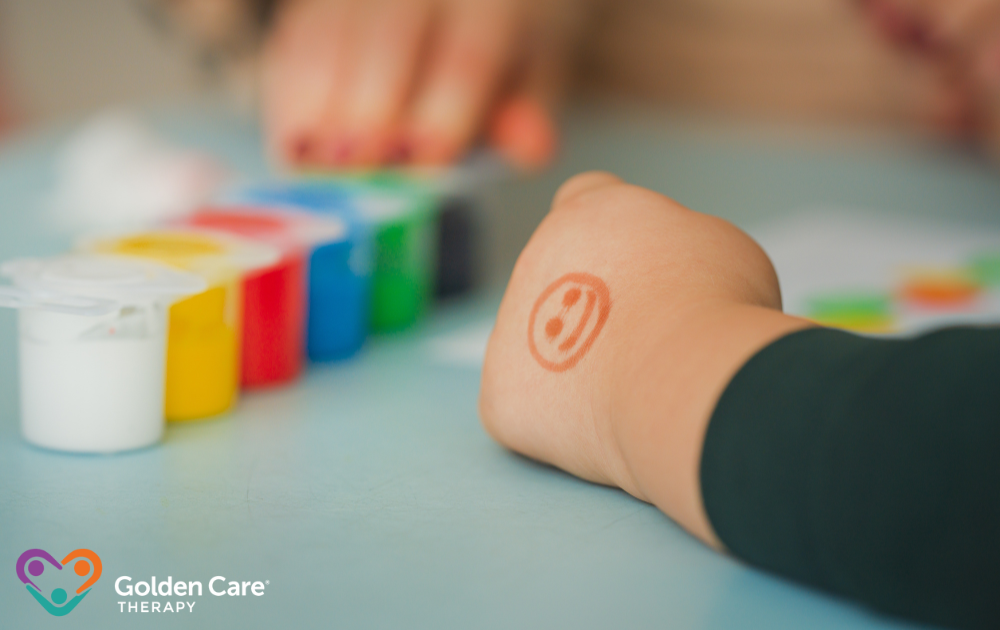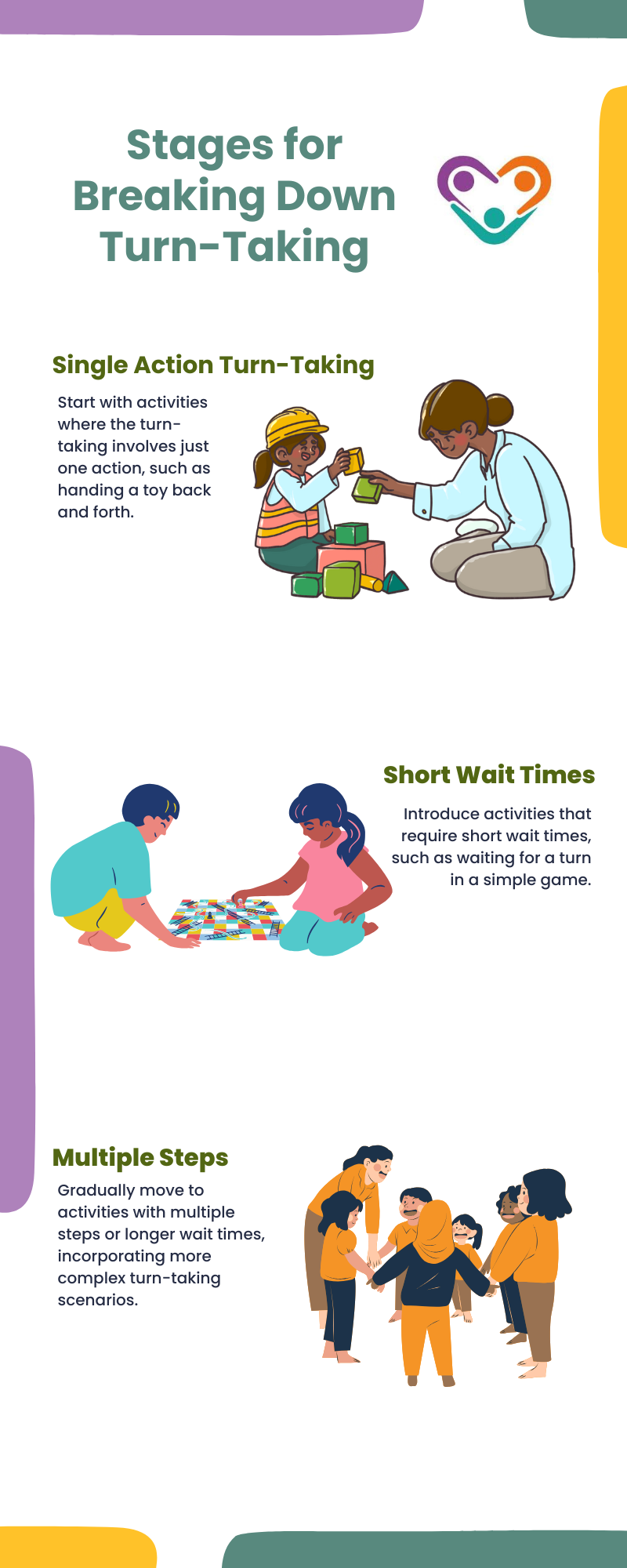Turn-taking is a crucial social skill that helps us interact smoothly with others. For individuals with autism, learning how to take turns can be a bit more challenging, but with the right strategies, it can become easier.
This skill is important for playing games, having conversations, and participating in group activities. By using tailored approaches, we can make turn-taking more accessible and enjoyable.
Without further ado, let’s look at some effective strategies for teaching turn-taking to autistic individuals.

Creating a Supportive Learning Environment
Establishing a supportive environment is crucial when teaching turn-taking to children with autism.
Begin by creating a structured and predictable setting where the child feels secure. Consistency is key; having a clear routine and visual aids can make the concept of turn-taking more tangible. Visual schedules or picture cards that outline the sequence of activities provide concrete representations of when it will be their turn and what is expected.
These tools help bridge the gap between abstract social rules and concrete actions, making the concept of turn-taking more understandable.
In addition to visual supports, it’s important to maintain a calm and organized environment. The learning space should be free from distractions that could divert the child’s attention away from the task at hand.
This means minimizing background noise and providing a structured physical space where activities can be clearly defined.
A predictable and well-organized environment helps children with autism to focus better and understand the sequence of events, thus improving their ability to take turns effectively.
Using Visual Supports and Social Stories
Visual supports are powerful tools for teaching turn-taking. They offer clear and concrete representations of the social rules involved in turn-taking.
For instance, visual schedules can outline the steps of a game or activity, indicating when it’s the child’s turn and what they need to do next. This visual structure helps children with autism anticipate their turn and understand the process.
Similarly, social stories provide a narrative that describes specific social situations and appropriate behaviors, helping children visualize how turn-taking should occur in various contexts.
Incorporating these visual supports into daily routines and interactions reinforces the turn-taking concept through repeated exposure.
For example, using a visual timer can help children understand the duration of their wait time before their turn comes up. This practical tool helps them manage their expectations and reduces anxiety associated with waiting. By integrating visual aids and social stories into regular activities, children with autism can gradually build their understanding and comfort with turn-taking in a supportive and structured manner.
Incorporating Structured Play and Games
Structured play and games provide practical opportunities to teach turn-taking while making the learning process enjoyable. Activities with clear rules and turn-taking mechanisms, such as board games or simple tabletop games, offer a fun way to practice this skill.
Start with games that are easy to understand and that clearly delineate each player’s turn. This clarity helps children grasp the concept of turn-taking through engaging and interactive experiences.
Over time, as children become more comfortable with the basic rules, you can introduce games that involve more complex turn-taking dynamics.
Incorporating a variety of games can also help children practice turn-taking in different contexts. For instance, you might use games with physical components, such as passing a ball, alongside more cognitive-based games like card games.
Each type of game offers unique opportunities for practicing turn-taking, helping children apply the skill in various settings.
Modeling and Role-Playing
Modeling appropriate turn-taking behaviors is a crucial strategy in teaching this skill. Demonstrate turn-taking during interactions with the child, clearly stating when it is your turn and when it is the child’s turn.
For example, during a game, explicitly mention, “Now it’s my turn to play with the toy. Next, it will be your turn.” This clear communication helps the child understand the sequence of actions and the expectations for turn-taking. By observing and mimicking these behaviors, the child learns how to manage their own turns in a structured way.
Role-playing is another effective method for reinforcing turn-taking skills. Act out various scenarios with the child where turn-taking is required, such as taking turns speaking during a conversation or playing a game.
This practice allows the child to experience turn-taking in a controlled and supportive setting, where they can receive immediate feedback and guidance. Role-playing not only helps the child understand the concept of turn-taking but also provides them with practical experience in applying the skill to real-life situations.

Using Reinforcement and Positive Feedback
Positive reinforcement is a key element in teaching turn-taking. By reinforcing successful turn-taking behaviors, you encourage the child to continue practicing and improving their skills.
Immediate and specific praise for waiting their turn or for following the turn-taking rules helps the child connect their actions with positive outcomes. For instance, if the child successfully waits for their turn during a game, provide enthusiastic praise or a small reward to acknowledge their patience and adherence to the rules.
Gradually, as the child becomes more proficient with turn-taking, shift the focus from tangible rewards to intrinsic forms of motivation. Celebrate successes in a way that reinforces their enjoyment of the activity or their sense of accomplishment. This transition helps the child develop a natural interest in turn-taking and enhances their overall engagement in social interactions.
Breaking Down the Skill into Manageable Steps
Breaking down the skill of turn-taking into smaller, manageable steps can make the learning process more accessible for children with autism.
Start with simple activities that involve basic turn-taking, such as passing a toy back and forth. This initial step helps the child grasp the fundamental concept of taking turns without overwhelming them.
As they become comfortable with this basic turn-taking, you can gradually introduce more complex activities that involve multiple steps or longer wait times.
The process of breaking down turn-taking can involve several stages:

This gradual approach helps build the child’s confidence and competence in turn-taking, making it easier for them to handle more complex social interactions over time.
Encouraging Peer Interaction and Social Integration
Encouraging interactions with peers provides valuable practice in turn-taking within real-life contexts. Facilitate opportunities for the child to engage with their peers in structured settings, such as playgroups or social skills groups.
These interactions offer practical experience and help the child apply their turn-taking skills in varied social situations. Peer interactions can also provide additional motivation and reinforcement, as children often respond positively to social engagement with their peers.
Peer models, or typically developing children who demonstrate appropriate social behaviors, can be particularly beneficial. Observing and interacting with peers who model effective turn-taking provides the child with concrete examples and social cues.
These interactions offer opportunities for the child to learn through observation and imitation, enhancing their understanding of turn-taking and improving their social integration. By fostering peer interactions, you support the child in developing essential social skills that contribute to their overall social competence.
Conclusion
Teaching turn-taking to children with autism is a multifaceted process that involves creating a supportive learning environment, utilizing visual supports, incorporating structured play, and providing positive reinforcement. With the help of the strategies mentioned earlier, educators and caregivers can effectively support children in mastering this essential social skill.
The goal is to help children with autism navigate social interactions more confidently and successfully, ultimately enhancing their overall quality of life and social integration. For additional support and personalized strategies, consider exploring ABA services in New Jersey, Georgia, Indiana, and New York.
If you’re interested in learning more about how these services can benefit your child, contact us at Golden Care Therapy today to discuss your options and find the best fit for your family’s needs.
Sources:



